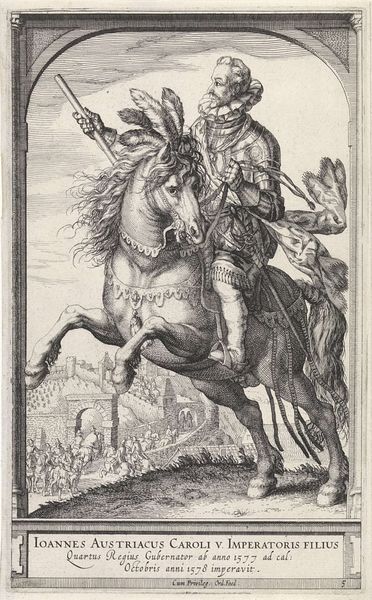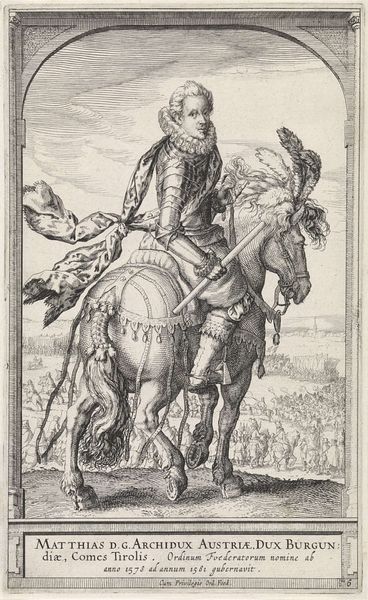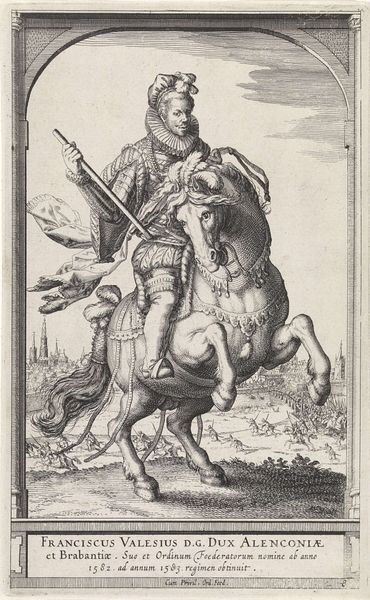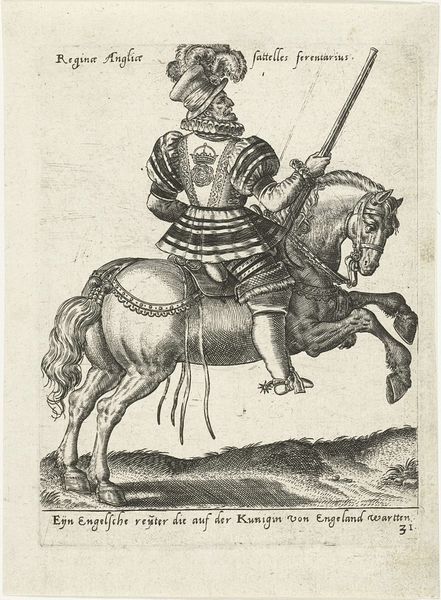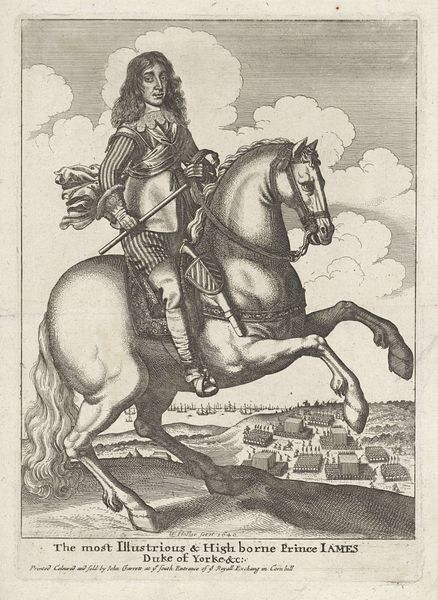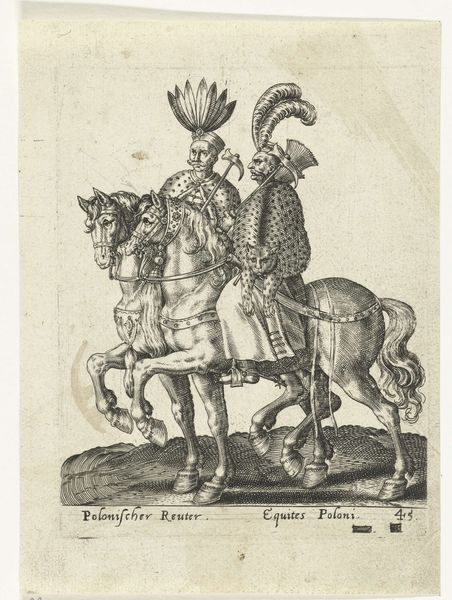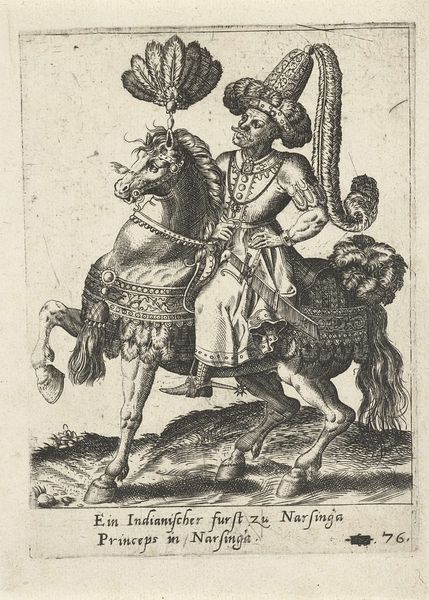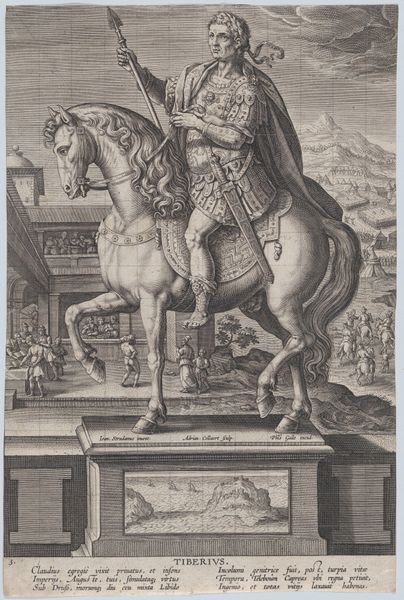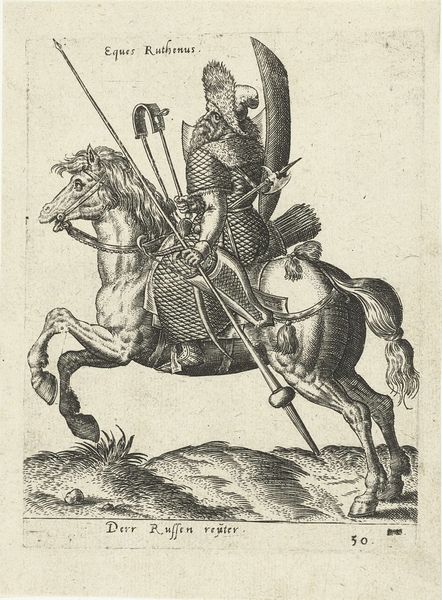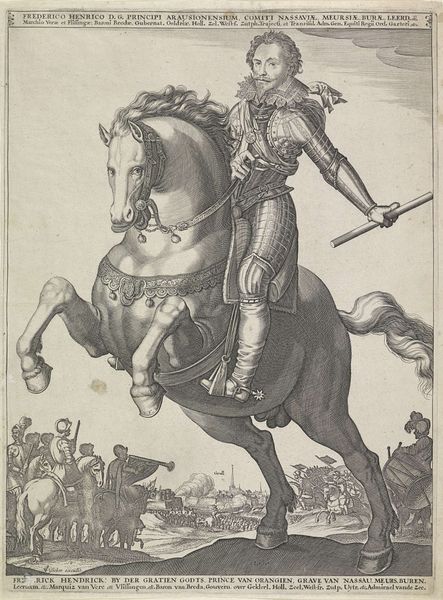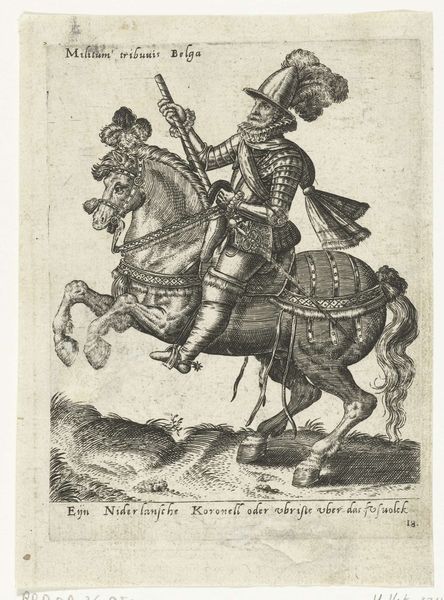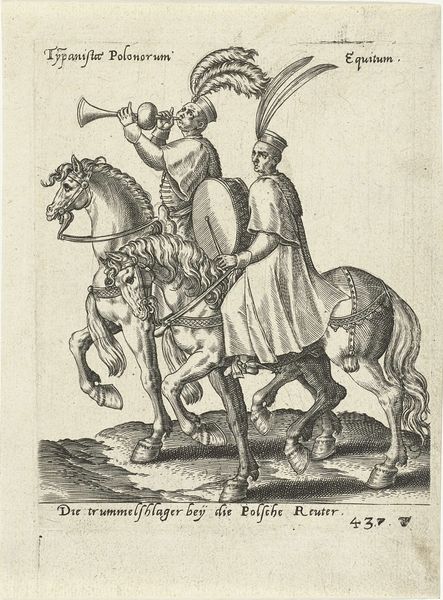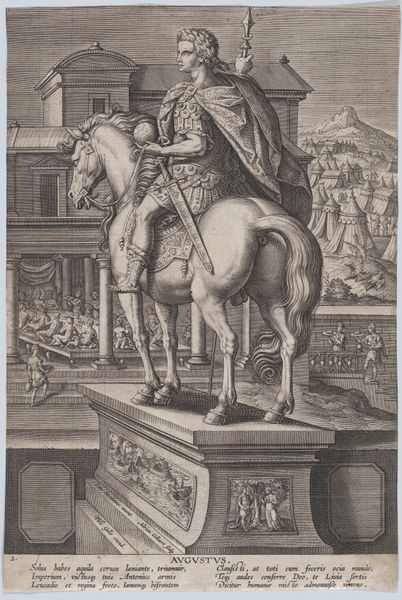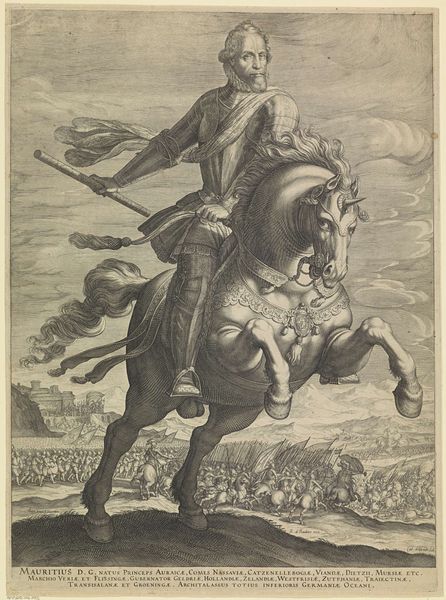
print, engraving
#
portrait
#
baroque
# print
#
pen illustration
#
figuration
#
pen-ink sketch
#
line
#
history-painting
#
engraving
Dimensions: width 160 mm, height 259 mm
Copyright: Rijks Museum: Open Domain
Curator: Before us, we have "Equestrian Portrait of the Duke of Alva," attributed to Hessel Gerritsz, and estimated to be made sometime between 1591 and 1632. It is rendered as an engraving, a print, offering a stark image in monochrome. Editor: Wow. It’s imposing, isn’t it? The Duke is definitely portrayed to look powerful, if maybe a little severe. There's a nervous tension in that horse rearing up on its hind legs that seems to vibrate right off the surface of the print. I almost want to comfort the poor creature. Curator: Well, remember Alva was a complex historical figure, viewed very differently depending on perspective. Engravings like this were reproducible. Their circulation cemented certain impressions in the collective consciousness about figures and events. Editor: True. And the line work! It's fascinating how a series of lines can create a whole world—from the folds in the Duke’s armor to the crowds in the background and that very elaborate bridle. Almost obsessive, it's got this detailed crispness that makes it incredibly graphic even by today's standards. It seems a commentary on order through precision, almost industrial. Curator: Indeed. And the details aren't just ornamental. Look at the architecture. The Duke is posed beneath an arch, framing him, drawing your eye up. Editor: Absolutely. You get a sense of the artist’s hand in every scratch and mark. It’s not trying to be photorealistic. It captures something deeper, an…aura, almost a sense of the times. The texture of the engraving feels historical in and of itself, which I guess is stating the obvious in some sense, but, you know. Curator: Think about the materiality of the print. Ink on paper, relatively accessible. This wasn’t an oil painting reserved for the elite. These were circulated— commodities shaping popular perception of leadership and power. Editor: Well said. Looking at it that way gives me chills. Makes you think about how impressions are made, stories get solidified, all with simple lines etched into copper. Curator: Yes. An object to prompt deeper consideration about the distribution of influence. Editor: I’ll remember to look a little closer at every print now.
Comments
No comments
Be the first to comment and join the conversation on the ultimate creative platform.
